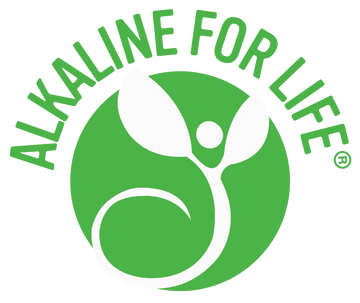Allergies: When Your Over-Burdened Immune System Overreacts

Allergies can be one of life’s biggest inconveniences. For some, allergies mean that signs of spring spur bouts of sneezing. Allergies also may mean that every food product label must be carefully scrutinized for its contents. So why are some of us avoiding certain foods, animals, and the outdoors? That all depends on your immune system.
What Are Allergies?
Allergies occur when an under-supported and over-burdened immune system decides that a particular substance is harmful and overreacts to its presence in the blood.
These annoying allergy-inducing substances are called allergens and can be inhaled, ingested, absorbed, or even injected into the body. (1)

Anyone can be affected by allergies. While more common in children, an allergy can develop at any age. Factors that can influence the development of allergies and their severity include the total load of environmental allergens (smoke, perfumes, mold, dust, etc.), hormonal imbalance, stress, and lack of anti-inflammatory and antioxidant reserves. (2)
Immediate Immune Response
There are 4 types of immune responses: types I, II, III, IV. These immune response types can be classified into two groups: immediate and delayed. Allergies are described as “Type 1 or Immediate Immune Responses” because symptoms occur within seconds or minutes of exposure to the allergen.
With immediate reactions, the immune system develops Immunoglobulin E (IgE), which are antibodies that release histamines. Histamines are what cause an allergic reaction and create the typical unpleasant allergy symptoms such as sneezing, skin rashes, swelling, and anaphylaxis. (3)
Allergy Symptoms
The severity and type of allergy symptoms depend on the allergy type and the amount of allergen you are exposed to. For instance, if you have seasonal allergies, you are more likely to sneeze if you frolic through a field of flowers than if you stay indoors. Immune competence is also important. A rested and nutritionally supported immune system simply soaks up the antigen without needing a big histamine release.
Allergies can manifest as one or more of the following bothersome symptoms: (1)
- Itchy eyes and nose
- Sneezing
- Runny nose
- Congestion
- Rashes or hives
- Vomiting
- Diarrhea
- Stomach cramping
- Wheezing
- Chest tightness
- Coughing
- Dizziness/lightheadedness
- Pain
- Swelling
Symptoms to pay attention to are flushed skin, a feeling of warmth, an itchy rash, dizziness, shortness of breath, pain, throat tightness, and vomiting or diarrhea. These may indicate anaphylaxis, which is a severe and/or life-threatening allergic reaction. If you experience any of these symptoms, seek immediate medical care. (3)
Food Allergy vs. Food Intolerance
How do you know that you’re experiencing a food allergy and not food intolerance or a digestive issue? (4)

If you are having adverse reactions to food, it is best to talk with your doctor to determine whether your reaction is an allergy or food intolerance. (5)
Methods for Allergy Relief
While allergies can be troublesome, there are ways to tackle the unpleasant symptoms they create.
The first step is elimination and limiting basic exposure as much as possible. Try to avoid all substances that you are allergic to. Steer clear of suspect foods and chemicals, use air filters, maintain a dust-free environment, utilize water filters, and the like.
For nutrient support, here at Alkaline for Life, we love taking a combination of the powerful antioxidant duo — L-ascorbate vitamin C and quercetin dihydrate — for natural allergy relief. To learn more about the antihistamine effects of quercetin and vitamin C, see our blogs: “How Buffered Ascorbate Can Help Relieve Your Allergies” and “Quercetin and Pomegranate: The Dynamic Duo for Natural Allergy Relief”
Not sure if you have an allergy? The best way to find out is to go to an allergist. Your doctor can perform a variety of skin and blood tests. A simple at-home test you can do to detect food allergies is a one-week elimination/challenge diet.
References:
- AAFA (Asthma and Allergy Foundation of America). 2015. What are the symptoms of an allergy? AAFA website. Accessed March 2022.
- Johns Hopkins Medicine. 2022. Allergies and the immune system. Johns Hopkins Medicine website. Accessed March 2022.
- AAAAI (American Academy of Allergy Asthma & Immunology). 2020. Allergic reactions. AAAAI website. Accessed March 2022.
- Li, J. T.C. 2020. What’s the difference between a food intolerance and a food allergy? Mayo Clinic website. Accessed March 2020.
- AAAAI (American Academy of Allergy Asthma & Immunology). 2020. Food intolerance versus food allergy. AAAAI website. Accessed March 2022.


